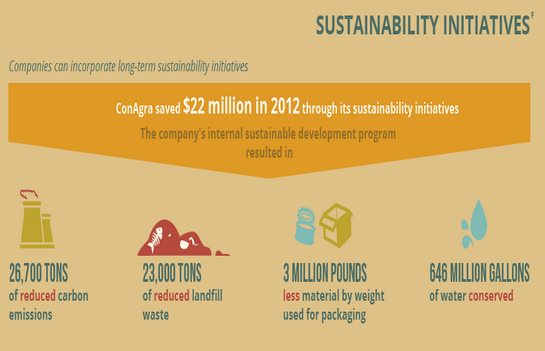One third of all food produced in the world is wasted. That’s about $400B a year, finds a recent report by the Waste and Resources Action Program. The majority of that food waste is discarded in landfills and results in 3.3 billion metric tons of greenhouse gases annually.
To shed light on ways we can reduce waste in the food supply chain from farm to fork, Marylhurst University’s Online MBA in Sustainable Business program created the infographic below. Based on data from GreenBiz, The Organic Trade Association, Environmental Leader and other sources, it illustrates how converting farm waste into energy, embracing innovative, green distribution technologies, creating corporate sustainability initiatives, and more can help build a more efficient and sustainable food chain while increasing the bottom line for food businesses.
The graphic shares some interesting statistics on the potential of green production methods. For example, the market for converting global waste into energy is expected to jump from $17.98B in 2012 to $28.57B in 2016. It also notes that long-term sustainability initiatives can reduce waste while generating savings. For example, in 2012, ConAgra saved $22M while reducing carbon emissions by 26,700 tons and landfill waste by 23,000 tons. In 2009, food and beverage companies with green initiatives in place experienced a 19% decrease in energy costs year over year, a 17% decrease in waste and disposal cost, a 5% overall reduction in operating costs and, very interestingly, a 15% increase in customer acquisition, according to the graphic.
Consumers care increasingly more about what’s in their food and how it’s produced. In fact, 78% of families say they choose organic food, the graphic states. One thing is clear after a spin through this graphic: Food corporations, governments and startups alike need to embrace innovative solutions for waste reduction throughout the supply chain.
Want more food waste innovation inspiration? Check out these posts:







